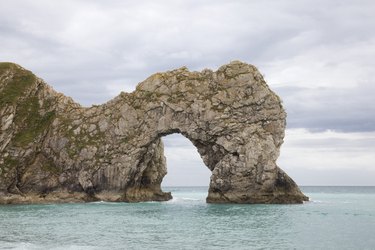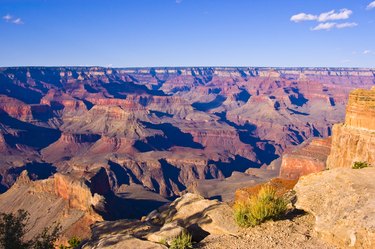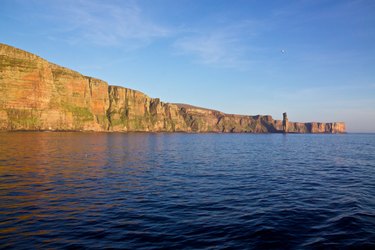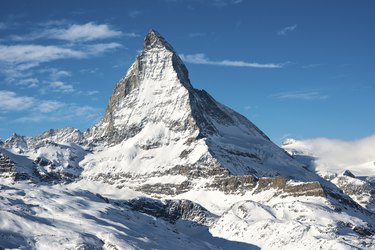
A few different processes cause landforms to develop, and this has shaped some impressive natural features on the surface of the Earth. These processes include erosion, where the action of glaciers, wind and water erode surface deposits at varying rates. This natural occurrence has created a number of different landforms in coastal and inland areas, with many famous examples of located around the world.
River Erosion -- The Grand Canyon

At over 277 miles long, up to 18 miles wide and one mile deep, the Grand Canyon has a reputation as one of the most famous landforms in America. The natural processes which played a part in forming it include the erosive action of the water and rock and soil debris flow carried by the Colorado River. These forms of river erosion helped to both deepen and widen the canyon over the course of millions of years, and continue to do so today.
Coastal Erosion

Sea stacks are large rock columns left standing isolated when the erosive effects of wind and waves cause the collapse of a section of cliff. One of the largest examples of this in the world is "The Old Man of Hoy." Located just off the west coast of the Orkney Islands in Scotland, the formation stands at almost 450 feet high. Another prominent example of coastal erosion is Bogenfels Arch, a natural sea-arch formed by the action of waves. Located in Namibia, it stands at a height of around 17 feet.
Wind Erosion

Wind loaded with sand in desert areas has an eroding effect on softer rocks over time. A famous example of this is "The Wave" in the Navajo sandstone rocks of the Vermillion Cliffs National Monument in Arizona. This landscape has effectively been sand-blasted into shape by the strong winds in the area, which pick up sand from the surrounding desert. One of the troughs that has formed resembles a breaking wave, which gave the feature its name.
Glacier Erosion

As glaciers move forward, they have an eroding effect on the surface rock and soil materials both below and around them. The force of this movement creates a variety of landforms, which come into view when the glacier retreats. The Matterhorn in Switzerland is an example of this, as its famous shape was carved by the eroding force of glaciers. Other examples of glacial erosion landforms include the fjords of Norway.